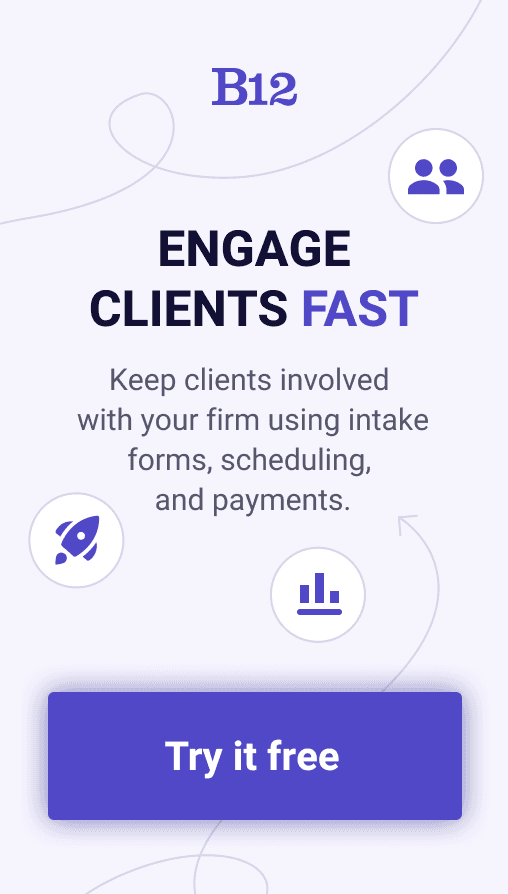Build an AI website in 60 seconds
AI generates your personalized website instantly with built-in scheduling, payments, email marketing, and more.
Start for free
Tips for writing invoice emails that get clients to pay faster

Need help getting your clients to pay their invoices promptly? An effective invoice email template can help you get your clients to pay faster without having to write messages from scratch each time. In this blog post, we will provide tips and advice to write an invoice email to get your clients to take action and make their payments quickly.
We will cover topics such as exploring email invoice templates, understanding your clients and their payment habits, writing an effective subject line invoice, keeping your email short and sweet, making payment options clear, and following up with a friendly reminder. Read on to learn more!
Writing emails for invoices to get clients to pay faster
Paying on time can be a huge challenge when running a small business. Clients often forget to pay their unpaid invoices, leaving you without the cash to keep your business running smoothly. Writing an effective email for invoices can help you get your clients to pay faster and ensure you receive the payments you are owed in a timely manner.
Tips for writing invoice emails that get clients to pay faster
Understand your clients and their payment habits
When sending an invoice email to clients, it is important to understand their payment habits. Knowing what payment terms you have agreed to and when they must pay will help you create effective emails. If you have established a payment timeline with your client, such as net 30, stick to it and remind them to pay on time. You should also be aware of any payment triggers that might cause your client to delay payment. Knowing this information will help you better anticipate and address potential payment issues.
In addition to payment terms and triggers, it is also helpful to understand your client's preferences. For example, some prefer to pay electronically through an online payment system, while others prefer to pay by check. You should also find out how quickly they expect to receive invoices. Knowing this information will help ensure your invoice is sent on time and in the preferred format.
Understanding the payment process from your client’s perspective can also be beneficial. Find out what their internal processes are for approving and processing payments. Knowing the steps involved can give you insight into how long it may take them to pay your invoice.
Consider if any additional incentives may help encourage your client to pay faster. For example, you could offer a discount for early payment or a referral program. Understanding your client’s payment habits can help you create an effective payment plan that meets their needs and helps you get paid faster.
Write an effective subject line
Send invoices with a subject line that is both attention-grabbing and informative. While you may be tempted to use a generic subject line like “Invoice Payment Request”, it’s important to be more specific so that your client knows exactly what the email is about and why they should open it. Here's an invoice email message example: “Invoice #[invoice number] Payment Request” or “Invoice #[invoice number] Payment Due by [date]”. The subject line should also be concise and to the point, as you don’t want to take up too much of your client’s time.
The invoice email subject line should also be friendly and polite. You don’t want to come across as demanding or aggressive. Consider phrases like “Invoice Payment Request – Your Prompt Attention Is Appreciated” or “Invoice Payment Due – Please Acknowledge Receipt.” This will remind your client of the urgent nature of the payment request, but politely and respectfully.
Consider adding personalization to your subject line. Adding a personal touch can make your client feel more appreciated and valued, encouraging them to respond and pay faster. Try including their name or the name of your business in the subject line. This could be something like “[Name], We’d Appreciate Your Prompt Payment of Invoice #[invoice number].”
Also, remember that the subject line should be clear and informative. Your client should be able to quickly understand what the email is about and why they should open it. This will help ensure they don’t ignore or delete the email without reading it.
Keep your email short and sweet
One key factor to consider when sending invoices is keeping the message short and sweet. An invoice email should provide the necessary details quickly and clearly, without additional irrelevant information. This guarantees the customer can comprehend the message and act without delay. Start by crafting a succinct introduction to yourself and your business to make your message clear and concise.
Thanks to this, the client will feel more at ease and understand who is sending the communication. Then, clearly state the purpose of your invoice email and provide the necessary information. Make sure also to include the payment due date, as well as any payment options available.
You should also remember to check your message for typos or other mistakes. This will help ensure that the client understands the message and takes action quickly. In addition, keep in mind the tone of your message. While polite reminders can be effective, overly aggressive language can alienate clients and make them less likely to pay.
Make payment options clear
The fifth step to writing a good invoice template is clarifying payment options. To determine whether clients know the payment options available, it is important to ensure they are clearly outlined in the attached invoice. Send an invoice that includes various payment methods you accept and provide detailed instructions on completing the payment. Additionally, include any information necessary for the payment such as bank account details, credit card numbers, or paid links.
In addition to making sure that the payment options are clearly outlined in the invoice attached, it is also important to be proactive and provide the client with additional payment options if needed. Ask the client if they need assistance completing the payment and if they require any additional payment options. This will show that you are willing to go the extra mile to ensure the client can pay quickly and easily.
Securing the payment terms are clearly stated in the invoice email templates is also important. Specify the payment due date and any applicable late fees or penalties. Also, it's crucial to give the client a simple way to contact you if they have any queries or worries concerning the payment. Include your contact information at the bottom of the invoice email so the client can easily contact you.
Follow up with a friendly reminder
Sending a friendly reminder at the end of an invoice email can be a great way to get clients to pay faster. After all, it helps to remind them that they still have an outstanding balance and provide them with the necessary steps to pay.
When composing your reminder, be sure to use polite, friendly language. Avoid aggressive or impatient tones, as this can only put clients on the defensive. Instead, emphasize that you understand their busy schedules and want to make the payment process as easy and stress-free as possible.
In addition to providing an easy way to make payment, you should include any contact details and information they may need to complete the requested payment. This could include a link to an online payment portal, the bank details to complete a wire transfer, or any other relevant instructions.
Finally, it's important to set expectations regarding the payment process. Let them know when you expect the payment to be completed and any potential consequences for not making their payment on time. This helps ensure that clients understand their obligations and that you are serious about collecting payment for your services.
Use invoice templates and manage your payments with B12
B12 is the all-in-one platform to efficiently run your service business, including your website, invoicing & payments, eSignatures, online scheduling, and more. Get a high-quality invoice email template, online payments & invoicing built into your online presence with B12. Launch a professional, branded website in 30 days or less with everything you need to attract, win, and serve clients. Start today!
Attract, win, and serve more clients
Receive helpful resources directly to your inbox to help you succeed online.
Draft your site in 60 seconds
Get an AI website made specifically for you that's free to launch.
Start for free ✨No credit card required
Spend less time on your website and more time growing your business
Let B12 set up your professional online presence with everything you need to attract, win, and serve clients.





